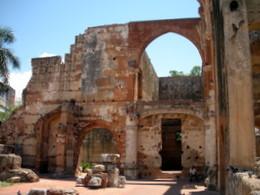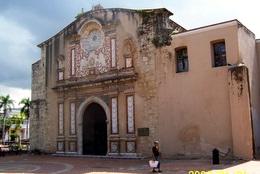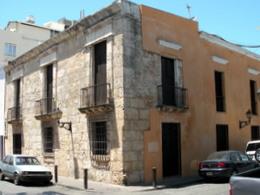


Three of the more than 2,900 images of colonial-era buildings and monuments made accessible via FlickR by the CUNY Dominican Studies Institute
Images of colonial-era Dominican historic sites and monuments comprise collection
The CUNY Dominican Studies Institute at The City College of New York (CUNY DSI) announced today that it has made accessible on the Internet an extensive collection of photographs of places and monuments from early colonial times of the Dominican Republic.
The searchable collection, titled “First Blacks in the Americas,” contains more than 2,900 photographs, organized in 57 sets, of historic monuments built during the Dominican Republic’s colonial period. These buildings, churches, houses and sites of industrial and artisan production date to when what is today the Dominican nation began to develop as the first colony of the Spanish empire in the Americas.
“These photographs constitute a valuable visual tool to understand what life was like for the forebears of today’s Dominicans during their first three centuries of history,” said Dr. Ramona Hernández, director of CUNY DSI. “At the time, these places constituted the diverse scenarios where generation after generation of inhabitants of La Española lived, worked and worshiped as they constructed, first, a colonial society and, then, an independent nation under the name of Dominican Republic.”
CUNY DSI Assistant Director Anthony Stevens-Acevedo led the effort to shoot, compile and upload the photographic collection to Flickr.com, an online photo-sharing system. Two CUNY students, Xiomara Sandoval, a student in the M.A. program in education at CCNY, and Yuberkys Pietrera Nova, an undergraduate in the B.A. program in education at Lehman College, assisted him.
Students, teachers, professors, researchers and other persons interested in studying Dominican history can use the images freely for research and educational purposes. The CUNY DSI Library will work with teachers from Upper Manhattan schools to create lesson plans that use the photos and conduct on-campus workshops for students. Commercial use of the photos requires formal permission from CUNY DSI under the Creative Commons license under which the images were published.
The images can be applied to teaching an array of themes about the Dominican culture’s past. Examples include: ancient building systems, working conditions and types of work associated with construction and architectural styles and life conditions and life styles associated with each type of building.
“We think this is the first collection online with this number of photos of Dominican historical sites that has been uploaded for public use so far,” said Dr. Hernández. “We have noticed the scarcity of images of this kind that exists online, and, in the face of this, we have decided to make ours available to the public interested in Dominican issues.”
The photographs in this collection are part of current projects undertaken by CUNY DSI that focus on early Dominican people, including:
- “First Blacks of the Americas,” a micro-website devoted to disseminating the stories of the African population that arrived in La Española during the 16th century and their descendants;
- “Juan Rodríguez and the Beginnings of New York City,” about the inhabitant of La Española who arrived in what is today New York in 1613 onboard a Dutch vessel, and
- “The Spanish Paleography Digital Teaching and Learning Tool,” which will help the public learn how to read the handwriting styles used in Spanish manuscripts of the 16th and 17th centuries.
This collection of images contributes to an increased public awareness about the rich monumental and material heritage Dominicans have, Dr. Hernández added. She noted that the Dominican heritage speaks of a historical and cultural continuity that runs from the time the first Europeans arrived in 1492 and began to interact with local aboriginals and Africans until the present day.
“These buildings and monuments have an important history to tell; a history of which the Dominican people in the United States is the most recent chapter,” Dr. Hernández stated. “This is a history that must not be forgotten because, to a large degree, it explains who Dominicans are and their way of being as a people.”
Accessing the collection
There are two ways to view the collection of photographs in the CUNY DSI online account on Flickr.com.
To view the images by thematic set, go to: http://www.flickr.com/photos/cunydsi/collections, which leads the visitor directly to the CUNY DSI “photostream” page in Flickr. Click on the link to the “First Blacks in the Americas” collection. When the page for that collection opens as a mosaic photos, click on any of the thumbnail image buttons to open the respective set of photographs.
To view images by thematic or subject categories across the entire collection, go to www.flickr.com. Type the tag-words “CUNY DSI” and “Dominican Republic” or “Hispaniola” in the “search” box, followed by any of the other thematic tag-words that have been assigned to the photographs, like “colonial period,” “colonial churches,” “colonial houses,” “colonial mills,” “colonial walls,” etc.
On the Internet
- CUNY Dominican Studies Institute
- Dominican Studies Institute Flickr photostream
MEDIA CONTACT
Ellis Simon
p: 212.650.6460
e:
esimon@ccny.cuny.edu